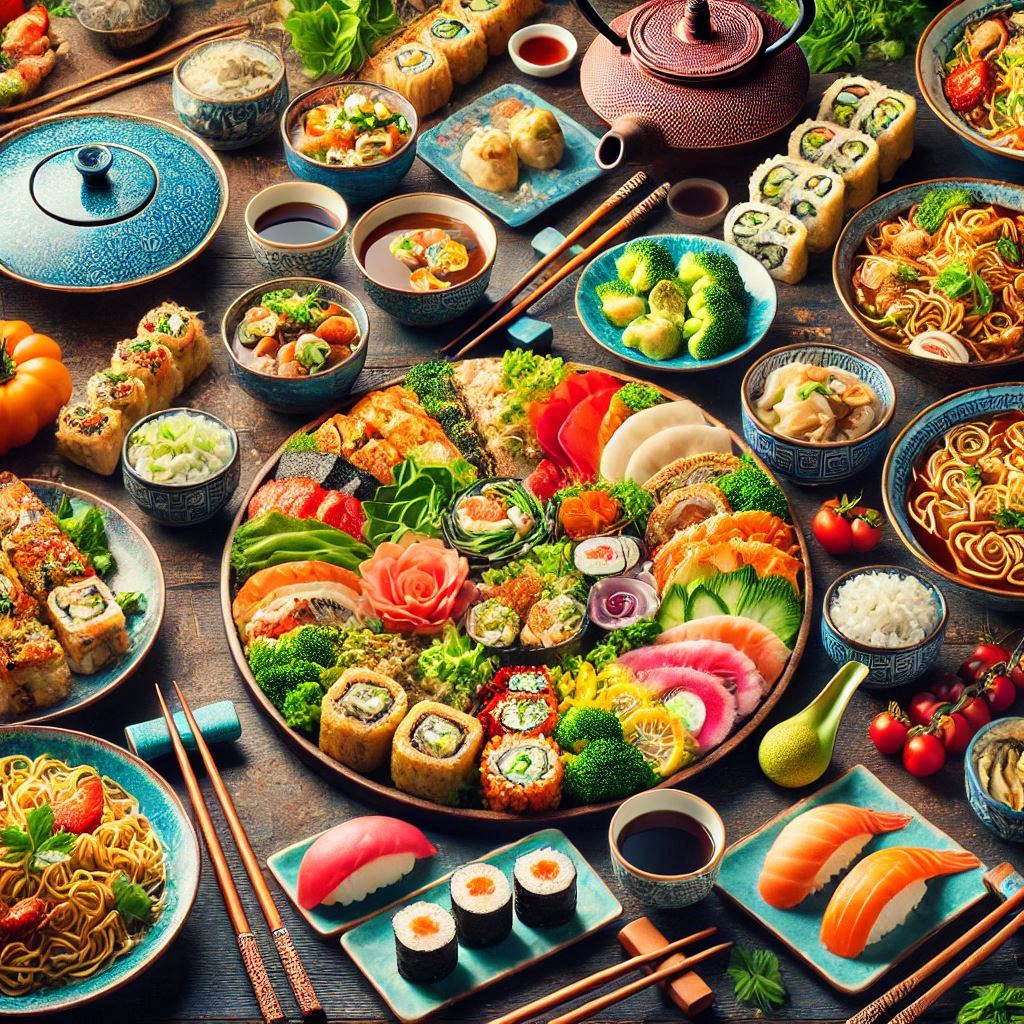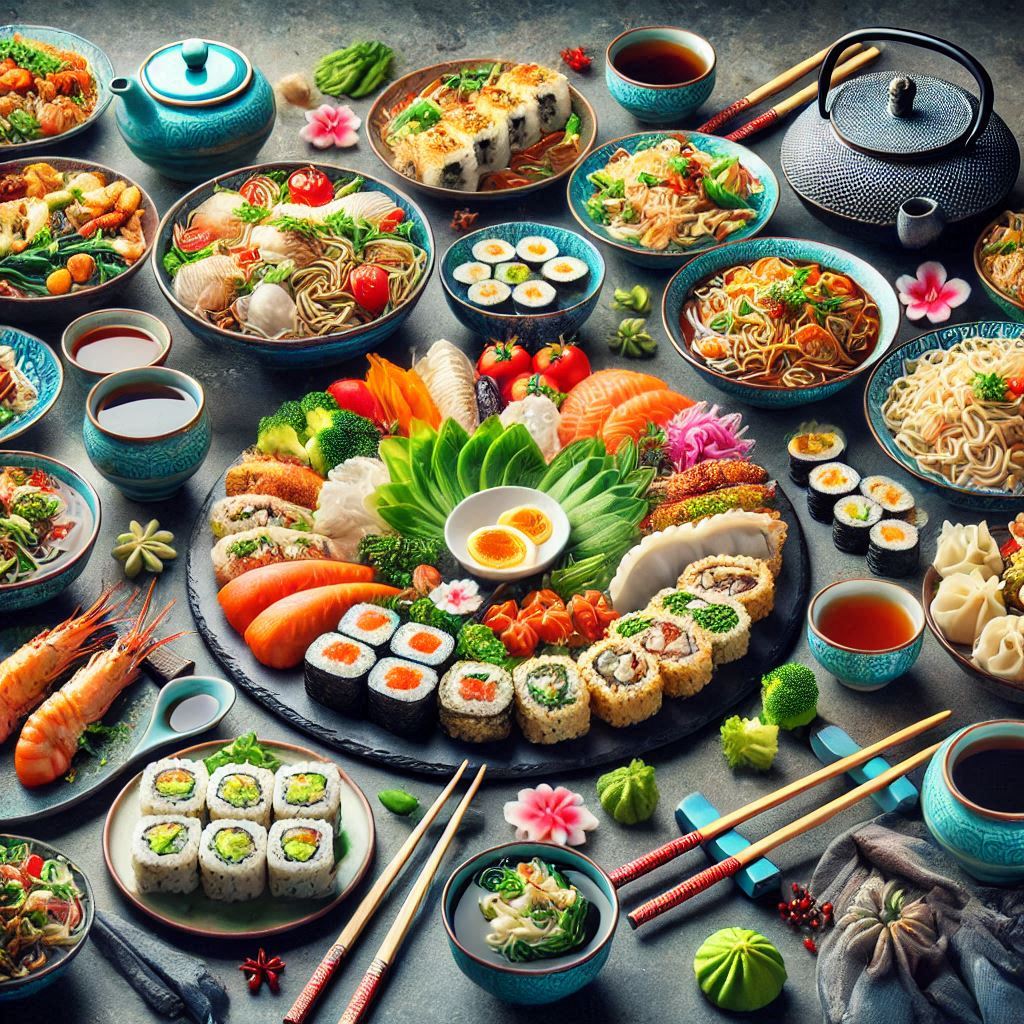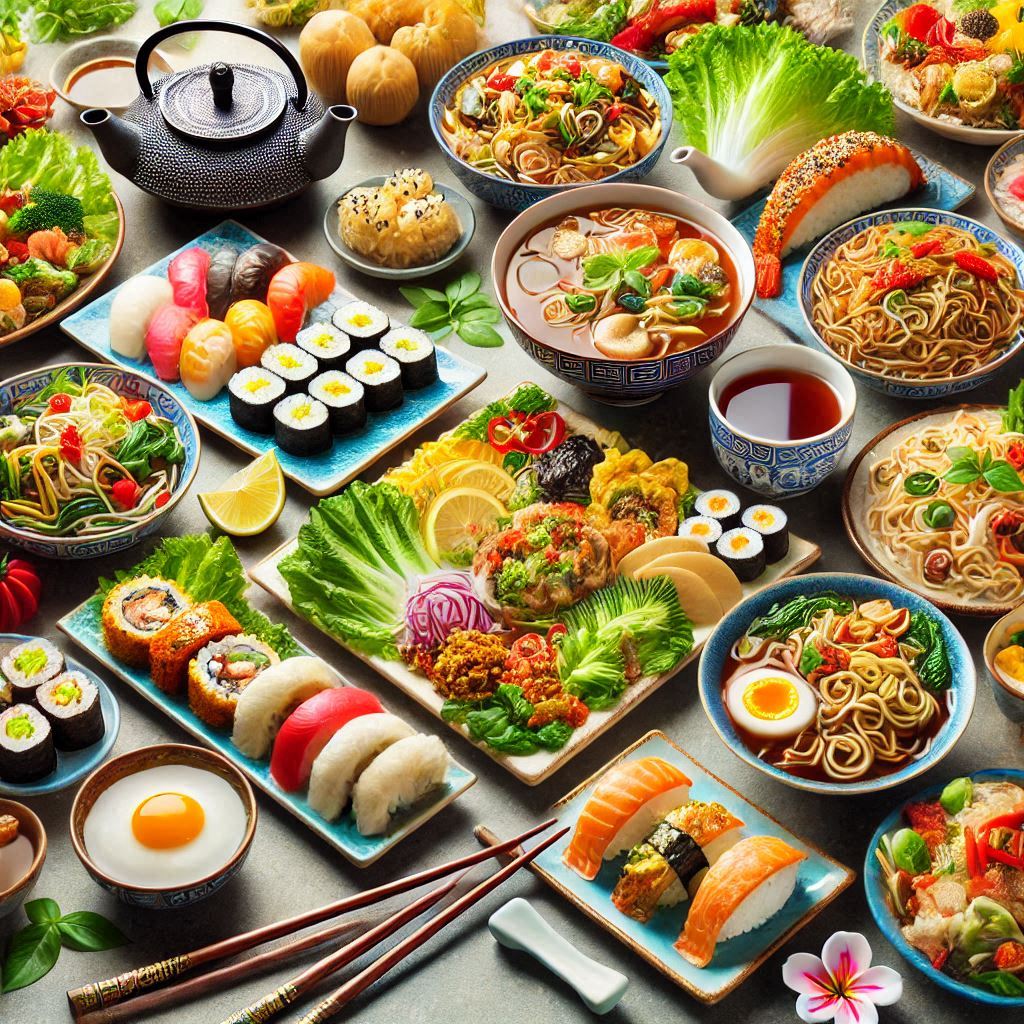中國菜和日本中華料理(“日式中華”)的主要差別
中國菜和日本中華料理(“日式中華”)在風味、烹調方法以及呈現方式上有明顯差異,這些差異源於兩國文化、飲食習慣以及食材的影響。儘管日本中華料理深受中國菜啟發,但它已經演變成符合日本人飲食偏好的獨特風格。
中國菜的特點:以地域多樣性、食材的豐富運用以及烹調技術的多樣而聞名。中國菜主要分為八大菜系,包括魯菜、川菜、粵菜、江蘇菜、閩菜、浙江菜、湘菜和徽菜,各具特色。中國菜講究味道的平衡,例如甜、酸、苦、辣、鹹的搭配,以及食材的新鮮與原味的保留。
在烹飪方法上,中國菜運用多種技法,包括蒸、煮、炒、炸、燉、烤等,並以高溫快炒和豐富的調味料見長。例如,川菜以麻辣為特色,粵菜則強調清淡和鮮美。一些知名的中國料理包括:
1. 宮保雞丁:四川名菜,將雞肉切丁後與乾辣椒、花椒、花生一起翻炒,味道酸甜微辣。
2. 北京烤鴨:北京的代表菜,以脆皮、嫩肉和特製的甜麵醬搭配薄餅而著稱。
3. 麻婆豆腐:川菜經典,以豆腐、牛肉末、豆瓣醬和花椒調製,麻辣濃郁。
4. 紅燒肉:以豬五花肉為主材,經長時間燉煮,帶有濃郁醬香。
日本中華料理的特點:起源於19世紀,主要由華人移民帶入日本,後來隨著日本人口味的改變而本地化。日式中華保留中國菜的基本形式,但更注重簡化製作過程,調味也更加溫和,以適應日本人的飲食習慣。在風味上,日本中華的辣味和油膩程度較低,湯汁比例較高,並經常加入日本獨有的調料,如味噌或清酒。此外,日本中華料理常作為簡便且大眾化的家庭餐點,與中國菜的正式宴席風格不同。一些典型的日式中華料理包括:
1. 拉麵:最具代表性的日式中華,雖然源於中國的「拉麵」,但日本版本加入豚骨湯、味噌湯等本地特色,並搭配叉燒、海苔、蔥花等配料。
2. 餃子:日式餃子比中國餃子更小巧,通常是煎餃,餡料以豬肉和蔬菜為主,搭配日式醬油或辣油沾食。
3. 麻婆豆腐:改良自川菜,味道不如中國版本麻辣,多加入甜味和勾芡,適合日本人的清淡口感。
4. 炒飯(チャーハン):日式炒飯使用稍微硬一點的米飯,調味以醬油為主,經常加入蛋、叉燒和蔥花。
5. 天津飯:日本特有的中華料理,以蛋包飯為基底,淋上加醬油或醋的澄汁,風味酸甜。
中國菜注重地域特色和原汁原味,講究調味的複雜層次,具有豐富的口感與風味。日式中華則強調簡單易食,更溫和的調味與適中的分量,適合日常生活。從製作到呈現,日式中華多數改良為便於製作與大眾接受的形式,並注重食材的新鮮,逐漸形成自身的飲食文化。
例如,麻婆豆腐在中國是麻辣濃郁的家常菜,而在日本則變得較少辣味;餃子在中國多為水煮,而在日本以煎餃居多。這些改良顯示兩國飲食文化中對於口味、烹飪方式和用餐場合的不同需求與偏好。
Chinese cuisine and Japanese-Chinese cuisine (“Nichi-Chu” or Japanese-style Chinese) differ significantly in flavor, cooking methods, and presentation. These differences stem from the cultural, dietary habits, and ingredient influences of each country. Although Japanese-Chinese cuisine is inspired by Chinese dishes, it has evolved into a unique style that suits Japanese tastes.
Characteristics of Chinese Cuisine:
Chinese cuisine is renowned for its regional diversity, extensive use of ingredients, and a wide variety of cooking techniques. It is traditionally categorized into eight major regional cuisines: Lu (Shandong), Chuan (Sichuan), Yue (Cantonese), Su (Jiangsu), Min (Fujian), Zhe (Zhejiang), Xiang (Hunan), and Hui (Anhui) – each with distinct characteristics. Chinese cuisine emphasizes a balance of flavors – sweet, sour, bitter, spicy, and salty – while preserving the freshness and natural taste of ingredients.
In terms of cooking methods, Chinese cuisine employs various techniques, including steaming, boiling, stir-frying, deep-frying, braising, and roasting. High-temperature stir-frying and rich seasonings are hallmarks of Chinese culinary style. For instance, Sichuan cuisine is known for its numbing spiciness, while Cantonese cuisine highlights light, fresh flavors.
Famous Chinese Dishes:
Kung Pao Chicken – A Sichuan specialty, featuring diced chicken stir-fried with dried chili peppers, Sichuan peppercorns, and peanuts. It offers a sweet, sour, and mildly spicy flavor.
Peking Duck – A signature dish from Beijing, known for its crispy skin, tender meat, and pairing with thin pancakes and sweet bean sauce.
Mapo Tofu – A Sichuan classic made with tofu, minced beef, fermented broad bean paste, and Sichuan peppercorns for a bold, spicy, and numbing flavor.
Red-Braised Pork (Hong Shao Rou) – Braised pork belly cooked slowly in soy sauce and sugar, resulting in a rich, savory dish with deep caramel notes.
Characteristics of Japanese-Chinese Cuisine:
Japanese-Chinese cuisine originated in the 19th century, brought to Japan by Chinese immigrants. Over time, the dishes were adapted to Japanese tastes, evolving into a unique culinary genre. While maintaining the basic forms of Chinese dishes, Japanese-Chinese cuisine simplifies the cooking process and uses milder seasonings to align with Japanese dietary preferences.
Japanese-Chinese cuisine typically has less spiciness and greasiness, with more broth or sauce. It often incorporates Japanese ingredients like miso or sake. Additionally, Japanese-Chinese dishes are commonly served as casual, everyday meals, differing from the formal banquet style of Chinese cuisine.
Iconic Japanese-Chinese Dishes:
Ramen – The most iconic example, inspired by Chinese “lamian” noodles. Japanese ramen features local adaptations such as tonkotsu (pork bone broth), miso broth, and toppings like chashu (pork slices), nori (seaweed), and scallions.
Gyoza – Japanese dumplings are typically smaller than Chinese dumplings and are often pan-fried (yaki-gyoza). The filling usually consists of pork and vegetables, served with soy sauce or chili oil.
Mapo Tofu – A milder version of the Sichuan dish, with added sweetness and starch to create a thicker sauce, catering to the Japanese preference for lighter flavors.
Chahan (Fried Rice) – Japanese fried rice uses firmer rice and is seasoned mainly with soy sauce. Ingredients often include egg, chashu, and scallions.
Tenshinhan – A uniquely Japanese-Chinese dish consisting of an omelette served over rice, topped with a thick, sweet-and-sour sauce made with soy sauce or vinegar.
Key Differences:
Chinese cuisine emphasizes regional diversity, complex flavor layering, and rich textures, reflecting a wide range of cooking techniques.
Japanese-Chinese cuisine prioritizes simplicity, mild flavors, and moderate portions, making it more suitable for daily meals.
Japanese adaptations of Chinese dishes focus on making them easier to prepare and more accessible to the general public, often highlighting fresh ingredients and straightforward presentation.
For example:
In China, Mapo Tofu is a bold and spicy home-style dish, while the Japanese version is milder and less spicy.
Chinese dumplings are often boiled, whereas in Japan, pan-fried gyoza is more common.
These adaptations reflect the differing culinary cultures and preferences in China and Japan, showcasing how flavor, cooking techniques, and dining settings vary between the two nations.



照片:DALLE3
- 1
- 2
- 3
- 4
